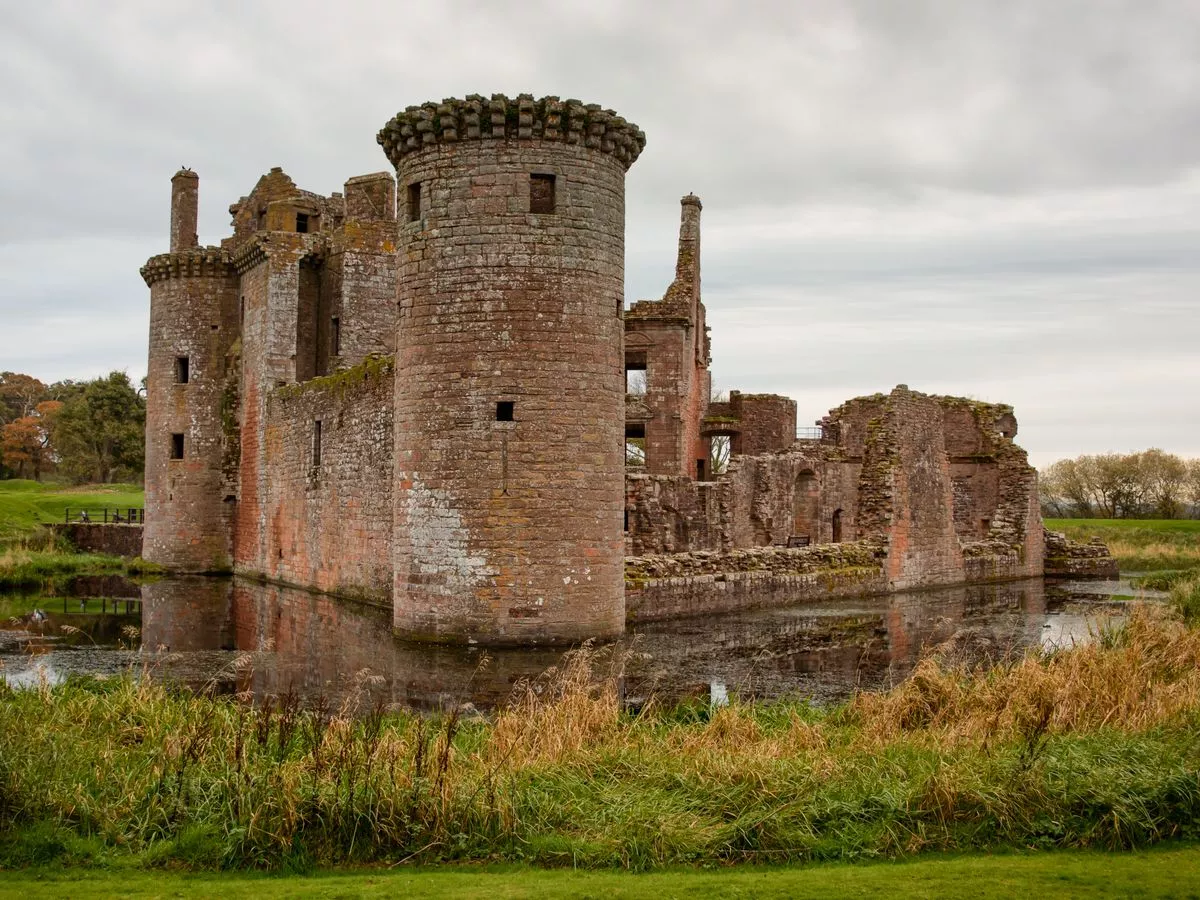Caerlaverock Castle, located in Dumfries and Galloway, Scotland, stands as one of the most distinctive medieval fortresses in the United Kingdom. Renowned for its unique triangular shape, the castle is a symbol of both the military prowess and the turbulent history of Scotland, particularly during the medieval and early modern periods. Built by the powerful Maxwell family in the late 13th century, Caerlaverock Castle played a crucial role in the region’s ongoing battles for dominance and independence.

A Fortress of Power and Strategic Importance
Caerlaverock Castle was constructed with a clear strategic purpose. Situated near the contested English-Scottish border, its design reflected the need for a fortified stronghold in an area that witnessed frequent military skirmishes and border disputes. The Maxwells, who were influential Scottish landowners, built the castle not only as a residence but also as a bold statement of their power and influence. The castle’s location allowed for strong defenses against incursions from English forces, making it a key player in the region’s military landscape.

The Siege of 1300: A Turning Point in Scottish Independence
One of the most significant events in the history of Caerlaverock Castle occurred in 1300, when it became the site of a famous siege during the Wars of Scottish Independence. The English army, led by King Edward I, laid siege to the castle, hoping to secure a foothold in the contested region. Despite a brave defense by the Maxwells and their allies, the castle ultimately fell to Edward I after a protracted and intense battle.

The capture of Caerlaverock Castle was a devastating blow to Scottish resistance, symbolizing the vulnerability of the kingdom during a time of external aggression. This event marked a key chapter in Scotland’s struggle for sovereignty and independence from England, with the loss of the castle acting as a reminder of the fragility of the nation’s position during the wars.
Rebuilding and Abandonment: A Changing Landscape
After its fall in 1300, Caerlaverock Castle was rebuilt and reinforced over the centuries. In the 17th century, during the Wars of the Three Kingdoms, the castle once again suffered significant damage. The castle’s fate was sealed as military conflict and changing political circumstances led to its abandonment. Despite efforts to restore the fortress to its former glory, Caerlaverock Castle never regained its strategic importance, and it gradually fell into ruin.

Today, the castle stands as a powerful ruin, surrounded by a protective moat, offering visitors a glimpse into Scotland’s medieval past. The dramatic and evocative ruins, with their advanced defensive architecture and impressive tower, continue to draw attention for both their historical and architectural significance.
Architectural Significance: The Triangular Design
Caerlaverock Castle is not just a historical site; it is also an architectural marvel. Its triangular design, a rarity among castles of the time, was carefully chosen to provide maximum defensive advantages. The shape allowed the castle to better withstand siege tactics by providing natural fortifications on all sides. The walls, built with high-quality stone, were designed to withstand artillery fire, and the strong central tower would have served as a final line of defense in times of attack.

The design reflects the Maxwells’ deep understanding of military engineering and fortification techniques, as well as their desire to showcase their dominance over the region. The castle’s unique shape continues to be a defining feature of its idenтιтy, setting it apart from other medieval structures.
A Legacy of Conflict and Resilience
Caerlaverock Castle’s history is emblematic of the broader conflicts that shaped Scotland’s idenтιтy. The battles fought within its walls, the sieges it endured, and the eventual abandonment of the castle all mirror the struggles for control and power that defined Scotland during the medieval period. Despite its decline, Caerlaverock Castle remains a testament to the resilience of both the Maxwells and the Scottish people as they navigated centuries of political and military turbulence.

Today, Caerlaverock Castle serves as a poignant reminder of the tumultuous history of Scotland. The ruins continue to captivate those who visit, offering a powerful connection to the nation’s past. The fortress stands not only as an architectural wonder but also as a symbol of the enduring legacy of Scotland’s battle for independence and the strength of its historical landmarks.